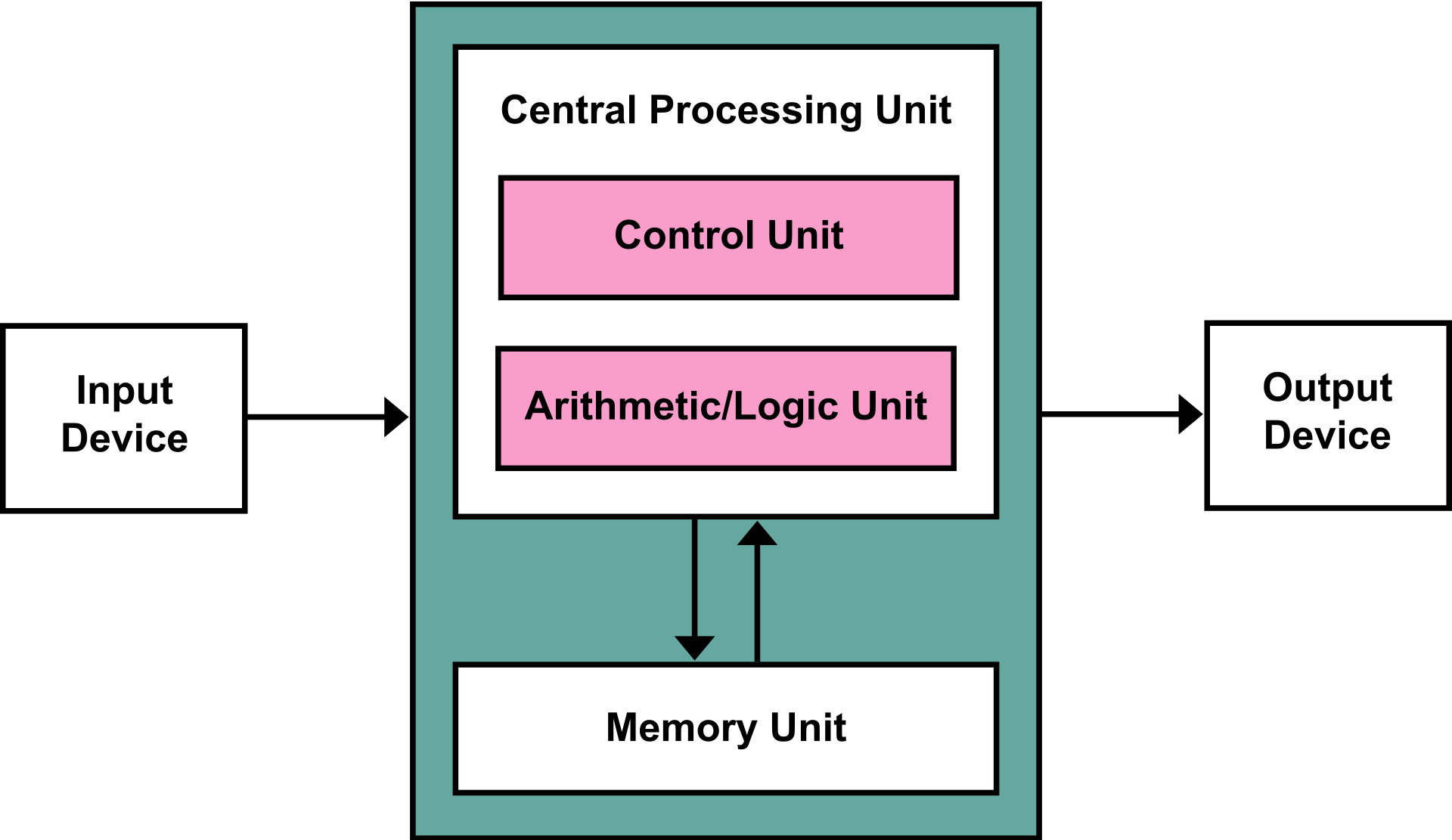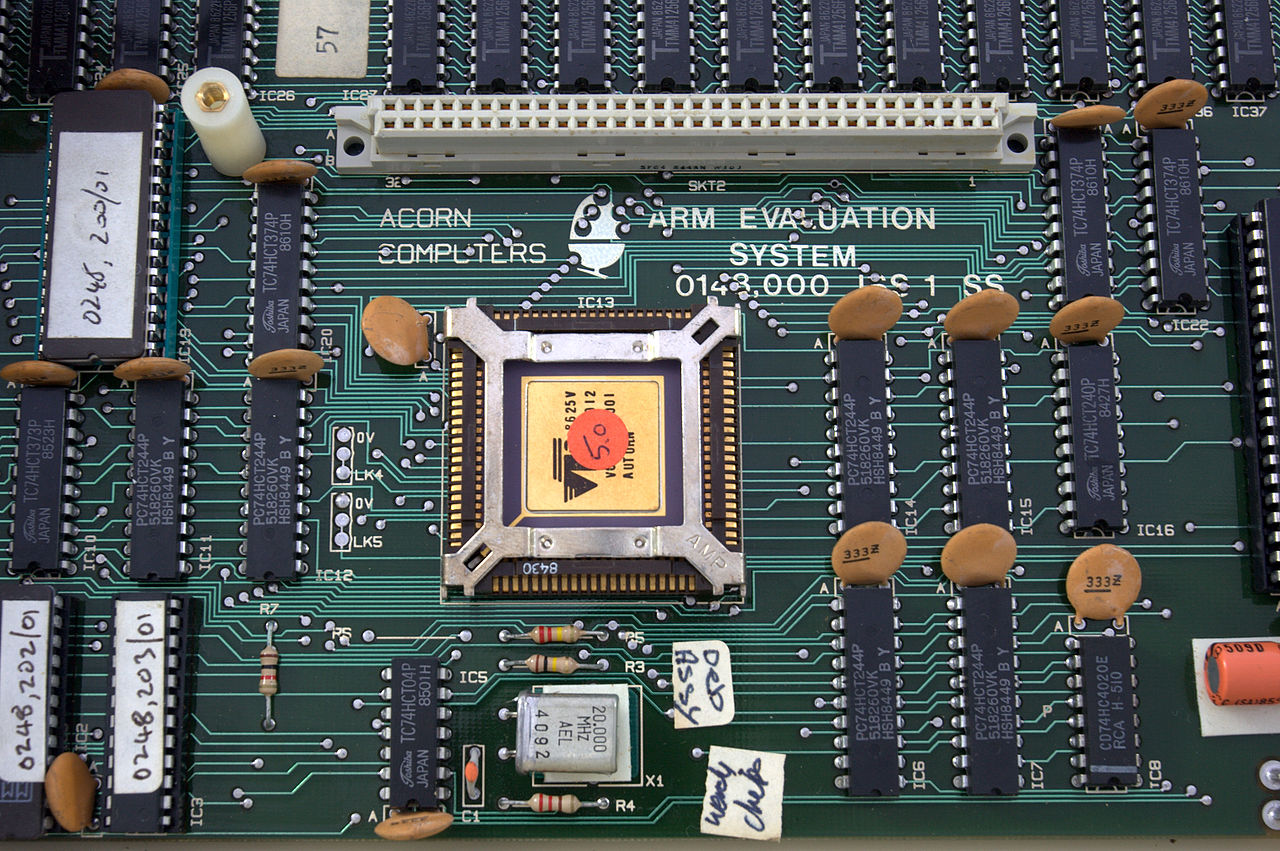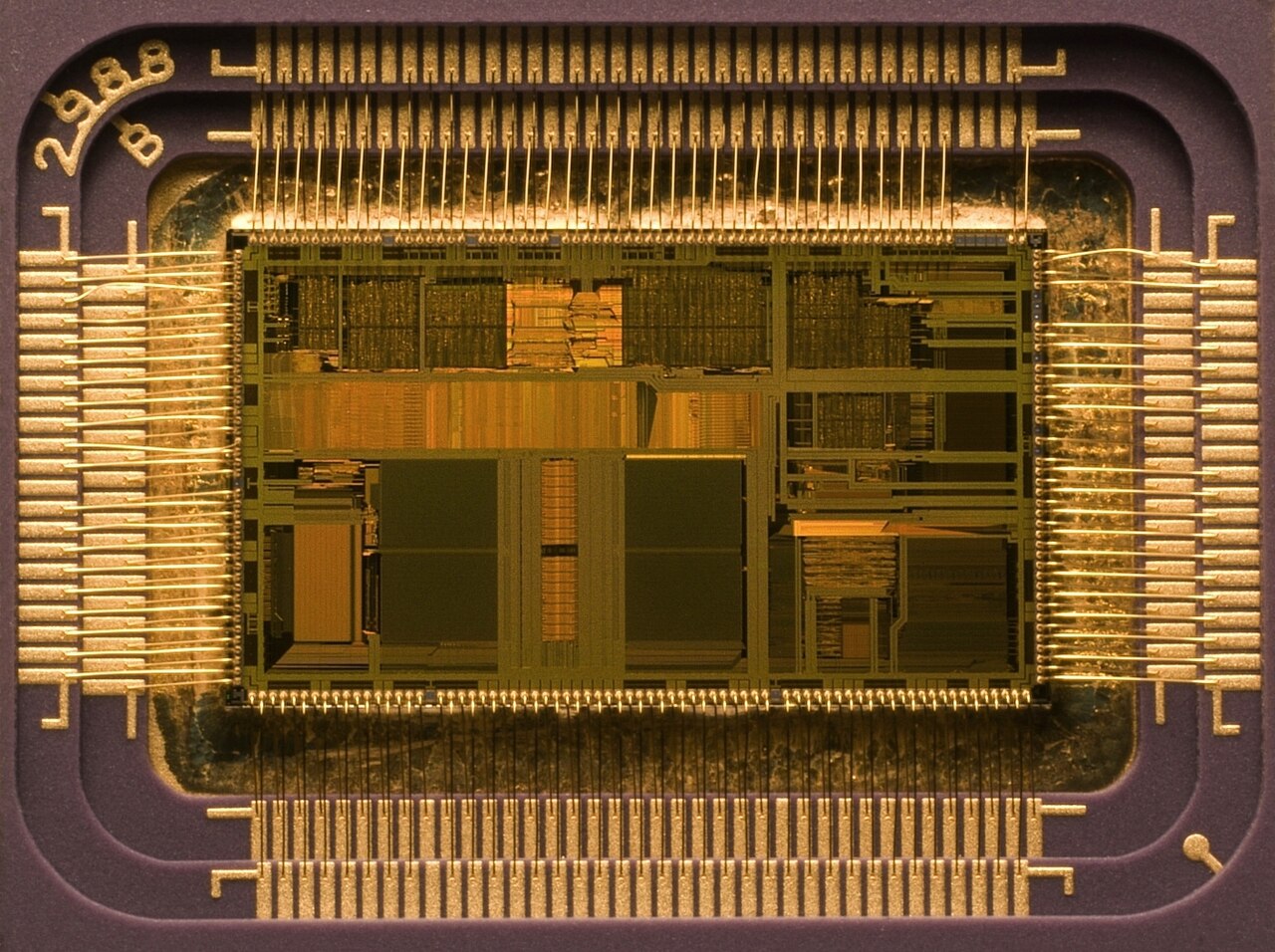Von Neumann Architecture
The Von Neumann architecture uses a single memory for both data and instructions, leading to potential memory access conflicts known as the "Von Neumann bottleneck." The simplicity of this architecture makes it inexpensive to implement but limits its performance, especially in tasks requiring high throughput.
Technical Information:
- Single memory bus for both data and instructions.
- Typically lower clock frequencies due to memory contention.
- Used in some low-cost, simple embedded systems.
- Limited parallelism, leading to lower throughput in high-performance applications.
Applications: Simple control systems, low-power embedded devices, educational platforms.
 By Kapooht - Own work, CC BY-SA 3.0, Link
By Kapooht - Own work, CC BY-SA 3.0, Link
Harvard Architecture
Harvard's architecture uses separate memory for instructions and data, allowing simultaneous access to both. This parallelism leads to much higher performance compared to Von Neumann architecture, making it suitable for embedded systems that require fast and deterministic processing.
Technical Information:
- Two separate memory buses: one for instructions, one for data.
- Reduced instruction fetch latency, leading to better performance in real-time systems.
- Widely used in microcontrollers (AVR, PIC) and Digital Signal Processors (DSPs).
- Supports multiple instruction fetch and data operations simultaneously.
Applications: Microcontrollers (PIC, AVR), DSPs, high-speed control systems, real-time embedded applications.
 By Nessa los - Own work, CC BY-SA 3.0, Link
By Nessa los - Own work, CC BY-SA 3.0, Link
RISC (Reduced Instruction Set Computer) Architecture
RISC processors are built on the principle of using a simplified instruction set that allows faster execution of instructions. ARM Cortex processors, which dominate the embedded market, are based on RISC architecture. RISC processors generally achieve higher performance and power efficiency by executing simpler instructions in fewer clock cycles.
Technical Information:
- Small, optimized instruction set allows faster execution with fewer cycles.
- Requires more memory for code as more instructions may be needed for complex operations.
- Optimized for performance and power efficiency, ideal for battery-powered embedded devices.
- Includes advanced features like pipelining, branch prediction, and multicore support (ARM Cortex-A).
Applications: IoT devices, mobile phones, industrial systems, automotive systems, and wearables.
 By Flibble When reusing photograph under CC licence please credit photograph to "Peter Howkins" - Own work, CC BY-SA 3.0, Link
By Flibble When reusing photograph under CC licence please credit photograph to "Peter Howkins" - Own work, CC BY-SA 3.0, Link
CISC (Complex Instruction Set Computer) Architecture
CISC processors feature a larger and more complex set of instructions, allowing them to perform multiple operations in a single instruction. This can reduce the number of instructions needed for complex tasks, but the hardware is generally more complex and less power-efficient. Intel's x86 processors are a well-known example of CISC architecture.
Technical Information:
- Large instruction set with specialized instructions that perform complex tasks.
- Typically, requires more power due to the complexity of hardware and instruction decoding.
- May reduce code size because fewer instructions are needed for complex tasks.
- Supports backward compatibility with older instructions, which adds to hardware complexity.
Applications: High-performance embedded systems, industrial control, automotive infotainment systems, general-purpose computing.
 By Matt Britt at the English-language Wikipedia, CC BY-SA 3.0, Link
By Matt Britt at the English-language Wikipedia, CC BY-SA 3.0, Link
Comparison of Popular Embedded Processors
Here is a detailed comparison of popular embedded processors, including technical details about their performance, power consumption, and applications.
| Processor | Architecture | Core Type | Clock Speed | Power Consumption | Applications | Key Features |
|---|---|---|---|---|---|---|
| ARM Cortex-M Series | 32-bit ARM (RISC) | M0, M3, M4, M7 | Up to 600 MHz (Cortex-M7) | Ultra-low power | IoT, automotive, wearables, industrial automation | Low power, real-time capabilities, integrated peripherals |
| ARM Cortex-A Series | 32-bit/64-bit ARM (RISC) | A7, A53, A72 | Up to 2 GHz (Cortex-A72) | Moderate to high | Smart devices, drones, robotics, high-end IoT | High performance, supports OS, multimedia support |
| RISC-V Processors | 32-bit/64-bit RISC-V (RISC) | RV32IM, RV64GC | Varies widely, typically 50 MHz to 1 GHz | Low to moderate | IoT devices, industrial automation, academic projects | Open-source architecture, customizable, growing ecosystem |
| AVR Microcontrollers | 8-bit AVR (Harvard) | ATmega, ATtiny | Up to 20 MHz | Very low | Hobbyist projects, education, small embedded devices | Simple architecture, widely used in educational tools like Arduino |
| Espressif ESP32/ESP8266 | 32-bit Xtensa (Harvard) | ESP32, ESP8266 | Up to 240 MHz | Low | IoT devices, smart home products, wireless applications | Wi-Fi, Bluetooth, low-cost, versatile |
| Microchip PIC Series | 8/16/32-bit PIC (Harvard) | PIC16, PIC18, PIC24 | Up to 120 MHz (PIC32) | Low to moderate | Industrial controls, automotive, consumer electronics | Wide range of peripherals, robust development ecosystem |
Learn More About Memory
Interested in a more detailed discussion about Memory and how they work? Click the button below to dive deeper into the topic.
Read More About Memory